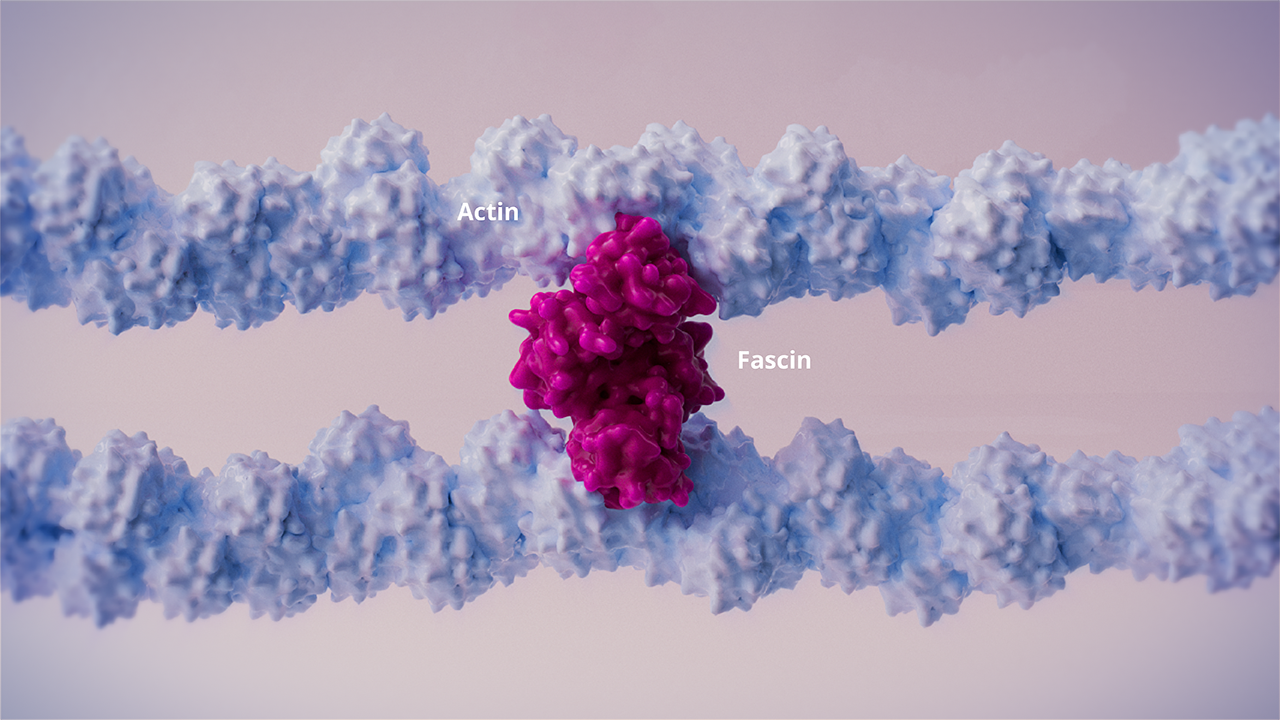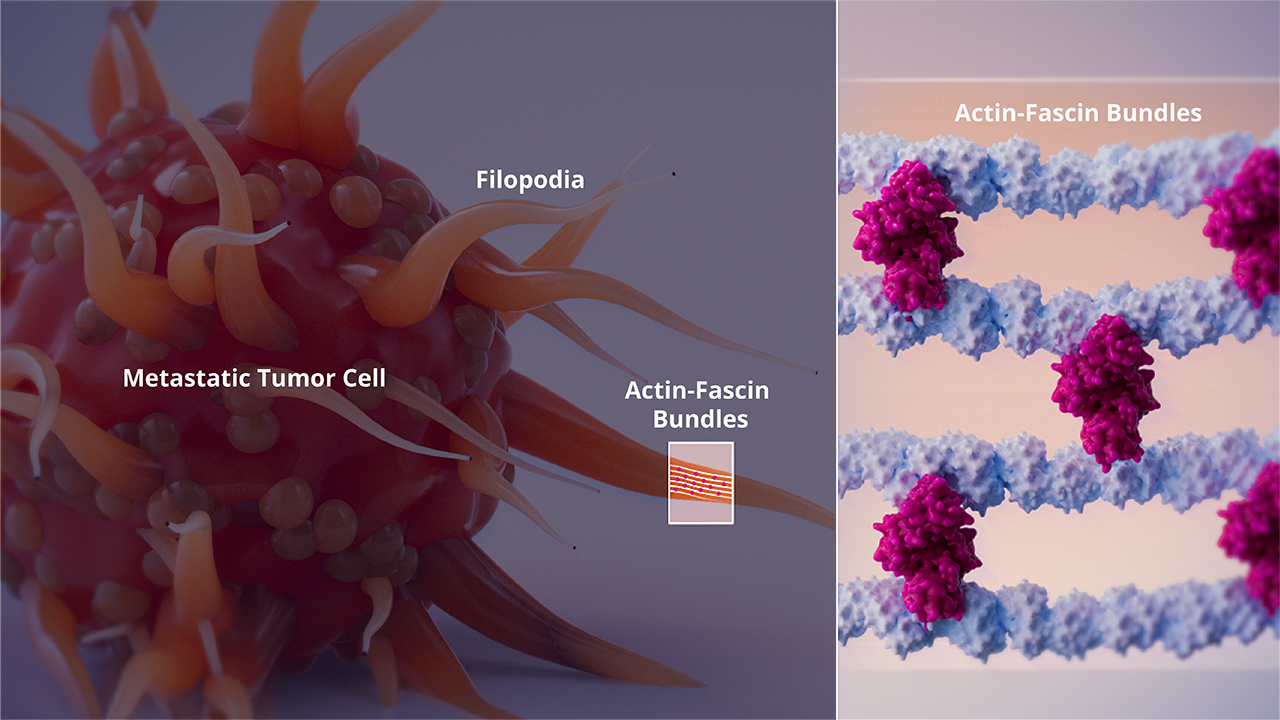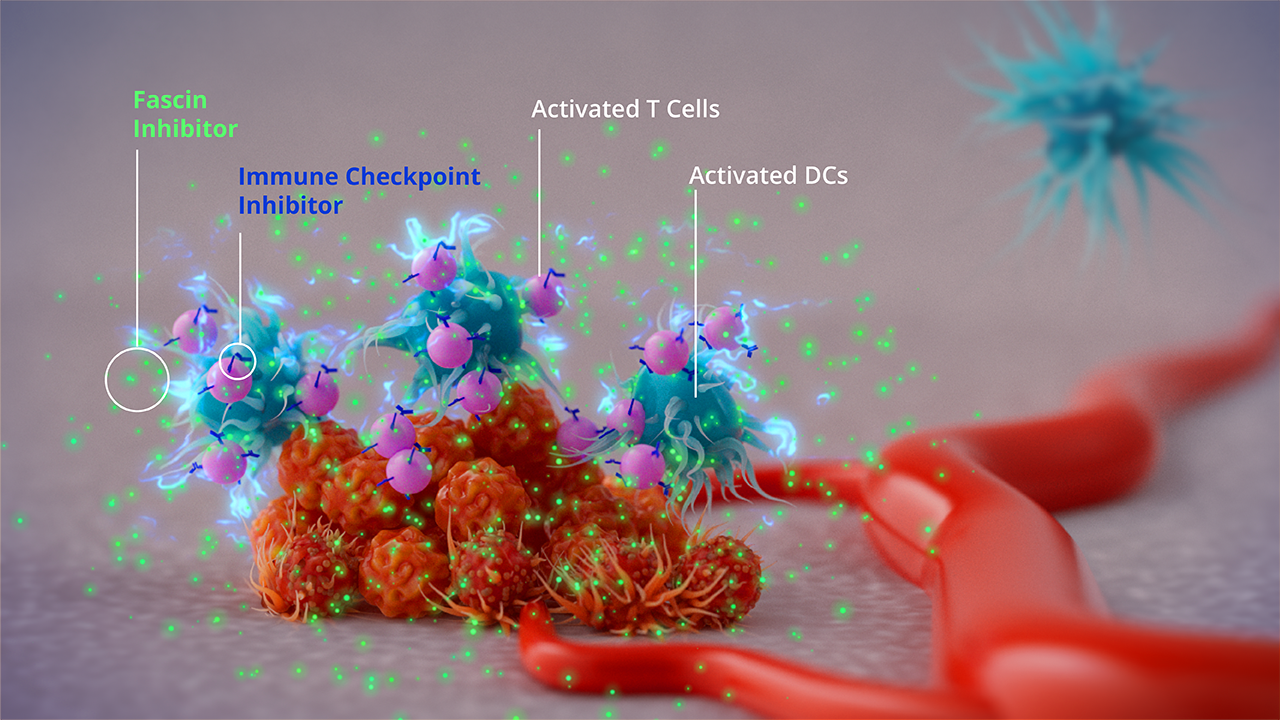Science
X-Ray Crystal Structure of Fascin
The co-founders of Novita solved the X-ray crystal structure of fascin and identified the actin-binding sites, which allowed for the screening, modification and optimization of small molecule fascin inhibitors.

Tumor Cell Migration
Tumor cell migration requires dynamic rearrangements of the actin filament network to form finger-like protrusions called filopodia. Metastatic tumor cells are rich in filopodia, and the numbers of filopodia correlate with a cell’s invasiveness. Fascin is the primary protein responsible for cross-linking actin filaments in filopodia. Elevated levels of fascin have been found in many types of metastatic tumors.

Role of Fascin in Metastasis
Tumor metastasis is the major cause of mortality in cancer patients. Tumor cell migration and invasion are critical steps in metastasis. Migration provides tumor cells the ability to leave the primary tumor (local invasion), enter the blood vessels (intravasation), and then exit the circulation and infiltrate distant tissues/organs (extravasation). It is critical to understand and interrupt the process of tumor metastasis as that is ultimately the terminal event for most cancer morbidity and progression to mortality.
Role of Fascin in Tumor Immune Response
Fascin inhibition, particularly in combination with PD-1/PD-L1 checkpoint inhibition, is associated with increased levels of activated dendritic cells, increased antigen uptake by these dendritic cells, and increased levels of activated cytotoxic killer T-lymphocytes in the tumor microenvironment (TME).
Fascin gene expression
- High levels of fascin are expressed during embryonic stages
- In adults, fascin is present only in microglial cells, microcapillary endothelial cells and dendritic cells
- Mice lacking the fascin gene in its genome (fascin-/-mice) developed normally
- Patients with many types of tumor show fascin gene gain or amplification (> 3 copies of the gene)

The Novel Fascin Inhibitor NP-G2-044
NP-G2-044 is a small molecule that inhibits the function of fascin, leading to the decrease of tumor growth, the block of tumor metastasis, and the enhanced anti-cancer immune response. NP-G2-044 acts by inhibiting the actin-bundling function of fascin, with inhibitory capabilities at low nanomolar concentrations in vitro. Specificity against the activity of fascin has been observed.
Fascin inhibitors – Mechanism of Action
Fascin inhibitors have three distinct mechanisms of action:
Mechanism 1
Blocking metastasis as result of inhibiting the formation of filiopodia in cancer cells.
Mechanism 2
Increasing dendritic cell antigen uptake and CD8+ T lymphocyte recruitment within the tumor microenvironment (TME).
Mechanism 3
Inhibiting tumor growth by decreasing cell proliferation of certain types of tumor.
A Multi-Faceted Attack on Cancer
Fascin Inhibitor NP-G2-044 in pre-clinical studies
Fascin inhibitors have been shown to block migration and invasion of many tumor types (Mechanism 1)
NP-G2-044 has been shown to work synergistically with immuno-oncology agents to increase overall survival in many cancer models (Mechanism 2)
NP-G2-044 has been shown to enhance the effects of chemotherapy agents
NP-G2-044 has been shown to directly inhibit the growth of certain types of tumors and thus increase overall survival (Mechanism 3)
List of Publications
© 2023 Novita Pharmaceuticals, Inc. | Site Design by Digital Elevator